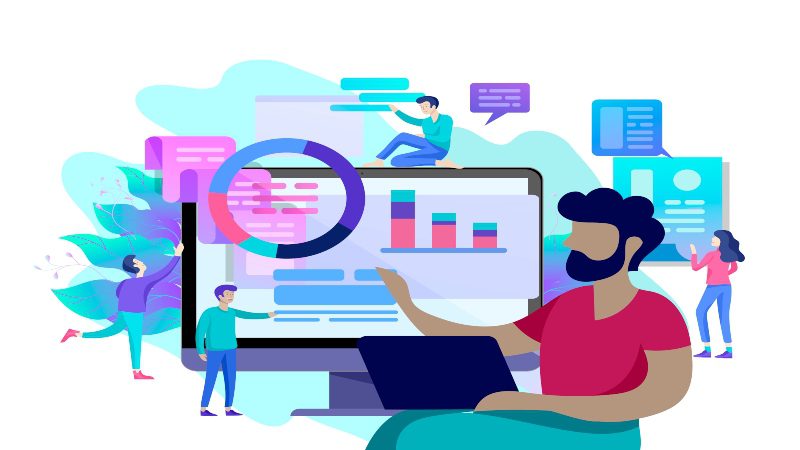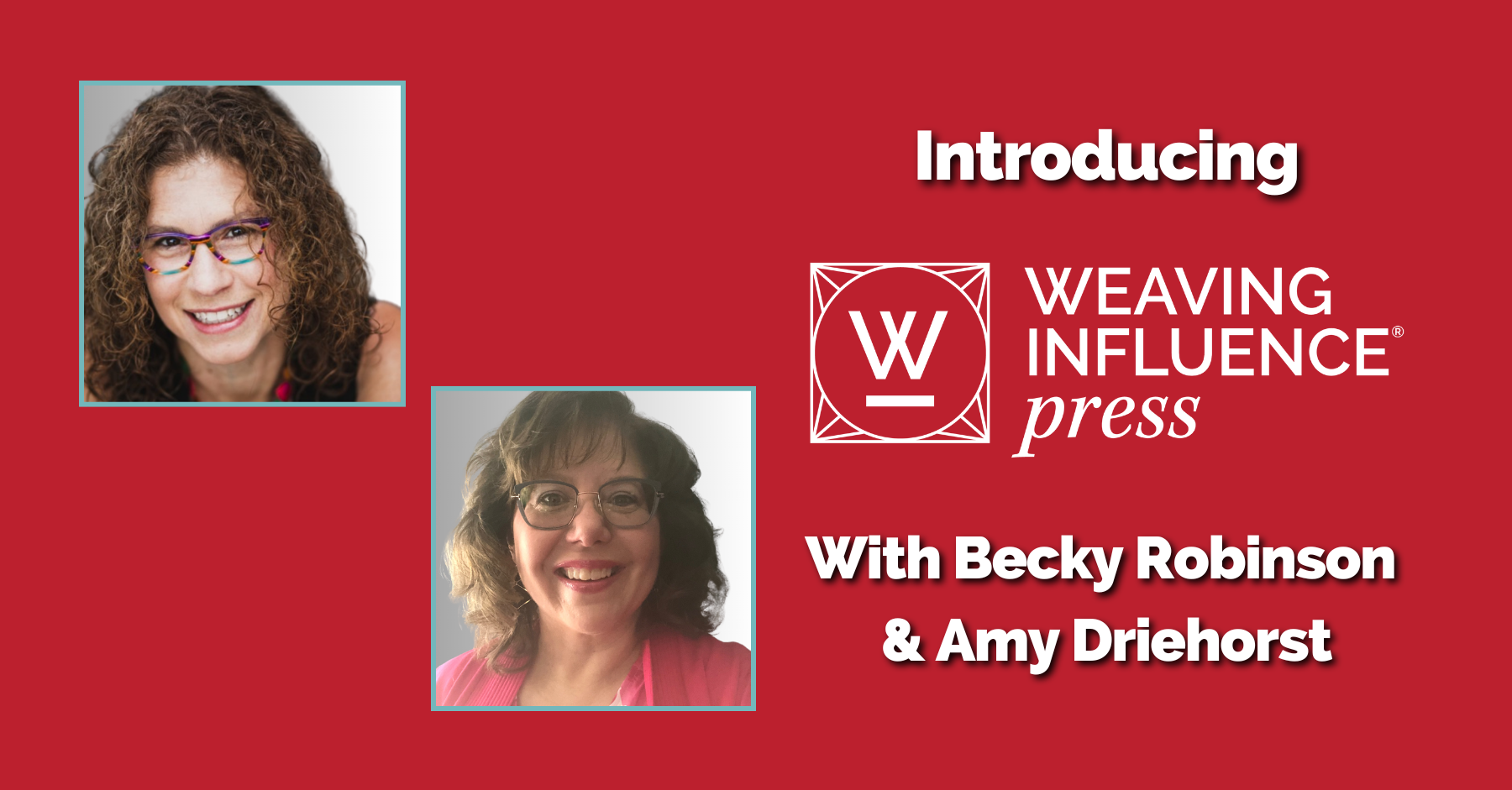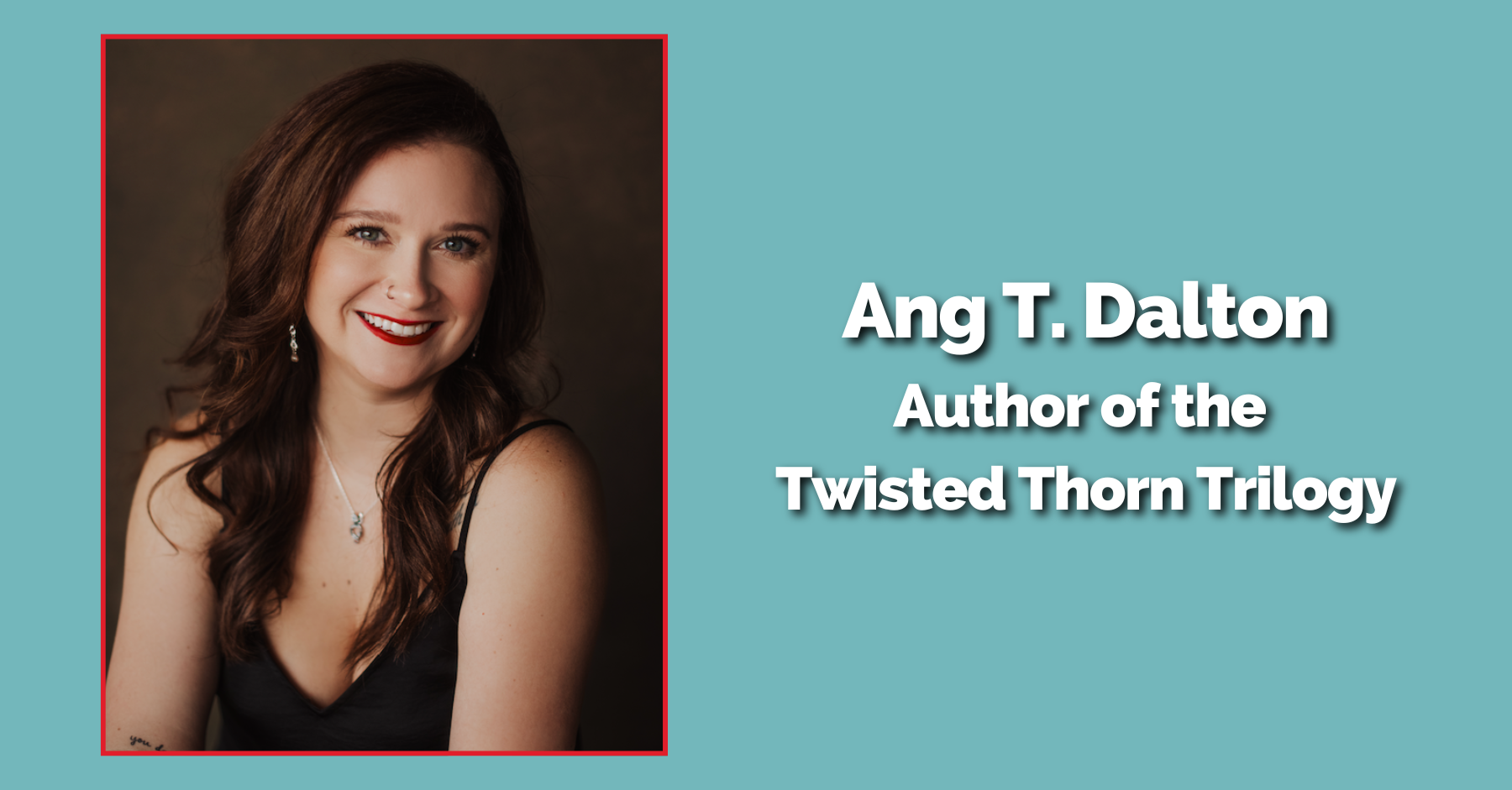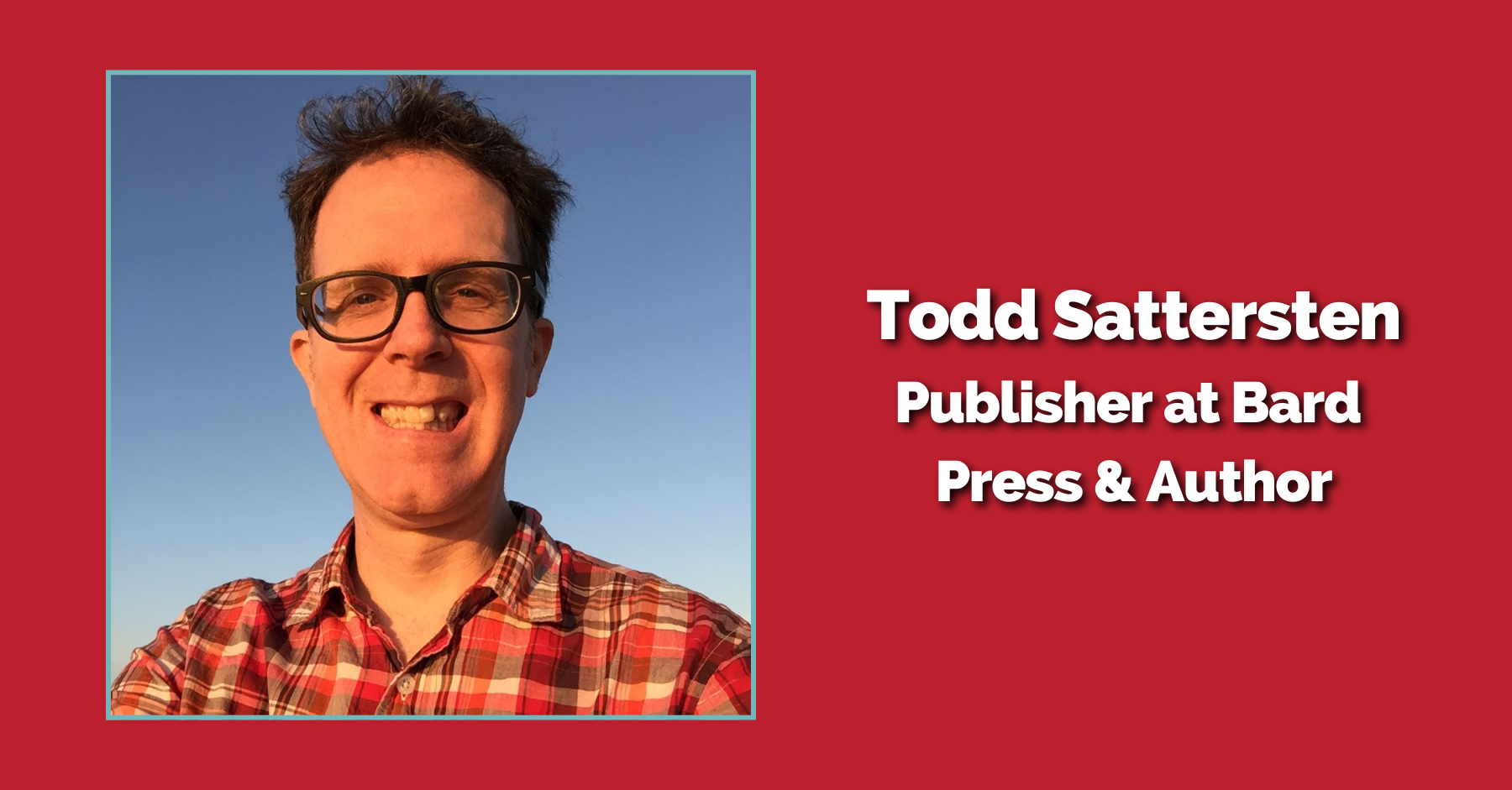Photo by merfin / 123rf.com
Click here to listen on your device and subscribe!
Welcome to Season 2 of The Book Marketing Action Podcast with Becky Robinson, where we give you information that you can immediately implement to increase your influence and market your books more successfully. This month, we are focusing on the topic of social media. In this episode, we are joined by our client Lisa Fain, CEO of Center for Mentoring Excellence.
About Lisa Fain
Becky: Lisa, as we dive in today, I’d love to start by letting you tell our listeners about your book and your work in the world.
Lisa: I am the co-author with Lois Zachary of Bridging Differences for Better Mentoring, which came out in February of 2020. It’s really about how you take your mentoring relationships and leverage differences in your mentoring relationships and it relates to my work. I’m the CEO of the Center for Mentoring Excellence, we work with organizations, large and small, all over the globe to help them create more inclusive cultures and better leaders through mentoring.
Becky: My team and I have loved working with you and through the launch of the book, and then also on marketing your brand and your business. I’m sure that we’ll touch on some of that today.
What has your journey been with using social media?
Becky: Lisa, we have not known each other on your whole journey. So I would love to start at the beginning. Tell me about your journey in using social media channels, how you got started, and how you found your way in using social media to get the word out about your work.
Lisa: I actually started my professional journey solo. After my corporate career as a coach, I was doing some moonlighting as a life and executive coach and I sort of dipped my toe into the social media water by just putting some feelers out on Facebook and a little bit on LinkedIn. Instagram was the great unknown for me, and certainly couldn’t even imagine being on YouTube. There was no strategy to it, it was if something came to me, or I had an announcement, I’d sort of let my friends know and haphazard effort gets haphazard results. So sometimes I would post a video that said something somewhat brilliant and get some good results and engagement, but it never really translated into anything for my coaching business.
When I moved into Center for Mentoring Excellence, we were doing what I would call a sort of curation. We would collect articles on the topic of mentoring and push them out through LinkedIn and Facebook, a little bit through Twitter. The following that we built was really small. Those people were who we knew well, who really already loved us, but there was never any action, we never had any calls to action at all. We never thought about it strategically, if there was, I think once a week one of us on the team would look for articles related to mentoring and then send it out to an external social media person and that was about it. Then I made a change to an external social media person who had a different vision than my vision. She had a vision of who I was, who Lisa Fain was, personally. However, Center for Mentoring Excellence really wasn’t quite as aligned with where I wanted to be. We did a little more curation there. We did a LinkedIn group called Bold Broads, which I’m actually really proud of, it’s about collecting stories of bold women and that was about it. Again, we weren’t measuring the return, we weren’t able to see what happened.
When I engaged with Weaving Influence, as a result, both with the book campaign and afterward, we really started to see something happen. I would say probably once or twice a month, I get a client that says I saw you on LinkedIn or I heard about you on Twitter, and the strategy really has made a difference for the business.
Did you see results from your long-term investment or a strategic approach?
Becky: Wow. That’s really interesting. Lisa, what I’m hearing is that you tried a bunch of different approaches and when you decided to become strategic, you began to see results. When I hear that, I’m super curious, because I have a couple of biases about social media use, and one of them is that it does take a long time to get results. So I don’t know that there’s any way of knowing, but I wonder if your results came because of a strategic approach or because you invested long enough to get the results or possibly both. Do you have any sense of that?
Lisa: I think it could’ve been that we were getting results, but we weren’t measuring anything. Right? So if you were to have asked me then, even how many followers I had at any particular social media channel, I would have to look it up. I’m not even sure I would have known where to look it up, and or what it meant, right? Or what my engagement was, or anything like that. So it wasn’t until I actually started paying attention to the numbers. I think there’s a self-fulfilling prophecy there a little bit, Becky, right? Some of it is the investment and some of it is the intentionality of this particular metric is something that I want to grow. And also before we were “peanut buttering” all over the social media platforms; “peanut buttering” meaning, you spread an even layer across all of the social media platforms without really choosing which to do or which not to do. Once I realized that my people are on LinkedIn, and I actually get a lot of energy from LinkedIn, and we started to focus on LinkedIn, but that doesn’t mean I don’t post on Facebook and do well. But on my personal page, I post different stuff. Sometimes there’s a crossover, but most of the time, my heart is with my intimate peeps on Facebook, and my heart of my business is on LinkedIn and Twitter. That’s really made a big difference as well.
Becky: So getting clarity about the channels where you’re most likely to connect with your target audiences, including people who might hire you, and then also having intentionality about not only paying attention to results, but measuring results and looking for results.
Lisa: Yeah, 100%!
Becky: That’s hugely powerful, it seems to me like what you’re saying is, you’re not going to get results using social media unless you’re looking for them.
Lisa: Exactly. I think part of it also is figuring out what matters, right? I sort of stopped trying to follow the models of people who I admire, but I didn’t even know what their back end was and what they wanted, and starting to realize what it was that I thought mattered, right? And using my own voice as I started to work with an external team, but they were able to help me reflect back on my own voice, which really made a big difference.
What was the best way to invest your time, energy & money with social media?
Becky: Let’s pause and talk about that for a moment. So you’re talking about outsourcing the execution and implementation of your social to our agency, in this case. How did you come to a decision that that was the best way for you to invest your time, energy, and money with social?
Lisa: Yeah, I think part of it is I started thinking about what do I dread doing? I can’t even tell you the number of times I would put on my calendar for the first half an hour or hour of the day, social, right. I might as well have written in those letters that look like a horror film, where they’re like bleeding up and down the page, because it was just that feeling to me, like what does that mean? It seems so big, and I kept putting it off, and yet, I knew I had good things to say, and I had a message that had to get out there. So one is I just kind of paid attention to where my energy went, and where it didn’t go. The other is that I helped people develop a strategy for a living and I recognized the value of strategy. When I started to look at the amount of time and frustration that I was putting into something that was important to me, but not strategic, that I really needed help in developing that strategy. So it was kind of a combination of two things. I have ambitious growth plans and I knew that social media was a key to those plans I really wasn’t leveraging.
What has been most challenging?
Becky: That’s so helpful and it’s interesting because I think if I showed up at work, and I had time blocked for social, I get excited about having that time blocked. So I think there are differences in how we each perceive and approach the use of social media. So Lisa, tell me what has been most challenging for you as it relates to discovering what works for you as an author and as a business owner in using social media?
Lisa: Calling out the stuff that’s off-brand. Not on my personal Facebook, my personal Facebook, I do what I want and I talk about the things that I want. I have a social action bent in my own personal life that I talk about a lot on Facebook, and to the extent that it relates to creating inclusive work environments, I’ll talk about that. But I think really thinking about what it is that makes me and our business stand out and be unique and focusing on that, that was something that I didn’t do a great job of on my own. But I think once I narrowed my voice, and I was so afraid of it honestly, Becky, because I was afraid of excluding people and limiting myself from all potential opportunities. But once I started to narrow what it was I wanted my voice to be, our voice as a business to be, then I was able to. I mean, it was hard and it was also pretty instrumental in making the shift.
Stepping outside your comfort zone
Becky: So at least I remember a conversation that we had once about how using social has challenged you to step out of some comfort zones, and I can remember, even the day you posted a photo of yourself with the keynote speech on your Facebook. Do you remember that? Tell me about that.
Lisa: Yeah, that is probably what the answer should have been to the last question. There wasn’t anything wrong with the answer I gave, but the short answer is, I do a lot of speaking. I love speaking. I get a lot of energy from speaking. I really didn’t like the idea of this being about me, right, even though, I love speaking, because I love the message. I love speaking because I love talking about the power of mentoring and the power of creating inclusive environments. I don’t love speaking because it’s about being up on stage, right? And taking a picture of myself posting as a keynote speaker felt like I was waving my hand like, “Hey, pay attention to me.” Right? It just felt so inauthentic. I think you told me or somebody told me that this is actually about the message and that I’m the vehicle to the message. So that really was a big, big threshold moment for me.
Becky: I was so happy to see it. Because one of the things I often coach people about is that social media really is about becoming memorable, and so by posting the photo of yourself speaking, you could become memorable to people.
One of the things that are important to me about social media, Lisa, is this idea of becoming memorable. When you can take a step out and risk sharing a photo that feels a bit uncomfortable or is not really within what you’d prefer to share, you increase the opportunity that you can become memorable for that thing that you’re doing. So speakers who share photos of themselves speaking, remind people that they’re available to speak. And so I’m so glad that you’ve been willing to walk on the edge of it that way, Lisa.
Lisa: Well, I’ve appreciated the push.
What do you expect from your investment in social media?
Becky: Let’s talk a little bit about what you expect from your investment in social media, Lisa, because you did mention that you’re ambitious, you have growth goals for your company. So what part does social media play in your ambition and growth goals?
Lisa: Yeah, part of what we want to be at the Center for Mentoring Excellence is really the go-to thought leader or expert on the subject of mentoring. And so I really see social media as the window into that opportunity. And so creating that visibility is really important. Mentoring is a really important tool that sometimes people don’t think about, and if they’re reminded about the presence of mentoring as a solution, they can think, “Oh, I know somebody who’s into that, I should contact Center for Mentoring Excellence.” I think social media is a great vehicle that way, as long as I continue to add value. And so I really view social media as a vehicle to get some value out. I subscribe to this model, “give, give, get”. Where you give twice as much out there than you expect to get in return. Probably “give, give, give, get” in all honesty. Sometimes it’s three times as much. And so I’ve used social media as a way to get the value out there of my ideas, our business’s ideas, and the importance of mentoring in general.
What are some results & benefits you’ve seen from using social media?
Becky: I love that Lisa, and I’m wondering if you could share with us some results and benefits you’ve seen from using social media for those who might be a bit reluctant or unsure that social media can bring about business results.
Lisa: Yeah, I mean, it’s a simple answer, but it’s a true answer, which is we’ve gotten a ton of clients. I would say, one or two potential clients a month reach out and say, “I saw you on LinkedIn,” or “I saw you on Twitter,” or “Somebody forwarded me the YouTube link of you speaking, can we talk?” And of course, not everyone results in business, but it’s okay. It’s really about, kind of, getting the word out. So that happens pretty frequently.
And the other piece is, I feel like I have become much more connected to other people in my field, and gotten lots of good ideas and insight from the connections that happen through social media. Somebody follows you, you follow them back and you learn about a whole new leadership theory. Or I learned about somebody who is doing mentoring in a youth context, on an international scale, and that gives me an idea for an article I want to write or something I want to record. So it’s not just the value of the connection in the business, it’s also the value of the thoughts and the ideas that I can then translate into putting more value out so I can get more value back. So I can put more value out so I can make more of an impact. All of those things, it really is a cycle.
Action Steps
Becky: That is so clear and I appreciate you sharing it, Lisa. So at the end of every episode of the book marketing action podcast, we always want to give one or two immediate steps that people who are listening could implement as a result of what they’ve heard today. So I’m wondering, Lisa, if you can recommend an action step or two that our listeners can implement, to be able to reach more people with their ideas?
Lisa:
- The first one is to look out for that peanut butter, see where are you spreading things evenly, where they don’t get even results. So an example that I use, I was putting the same effort into all of these social media platforms, and they weren’t all getting results. So the first action is, look out for where you’re getting results, and put your action where you’re getting results.
- And then the second thing is to watch out for your voice. Make sure it’s your voice, make sure it’s your message. It’s not that you can’t amplify other people’s messages, but if you do that, make sure that they’re consistent with your own.
Resources
- Learn more about Lisa Fain and Center for Mentoring Excellence, here.
- Connect with Lisa on LinkedIn, Twitter, and Instagram.
- Follow Center for Mentoring Excellence on Facebook and Twitter.
- Subscribe to Lisa’s YouTube channel here.
If you found value in today’s episode, we hope you’ll take a moment to share it with someone else who might benefit from it. If you have any questions or topics you’d like us to cover, please email Becky Robinson here.





One Response
Having spent most of my marketing career in sales, measuring results was what it was all about; numbers! My efforts, like Lisa’s “give, give, give, get” by no means yielded instant gratification. I traveled the midwest giving “lunch & learn” seminars, teaching graphic artists about how their knowledge of paper, ink, and print production could be used as design tools. The intent was that they would use these ideas and “spec” our paper for corporate identity projects. Sometimes it felt a little like throwing seeds into the wind and yet…bloom they did, often without me knowing which seed it was that had become a flower. Social media can help authors and thought leaders plant seeds in fertile ground without putting hundreds of miles on their vehicles, resulting in a garden!